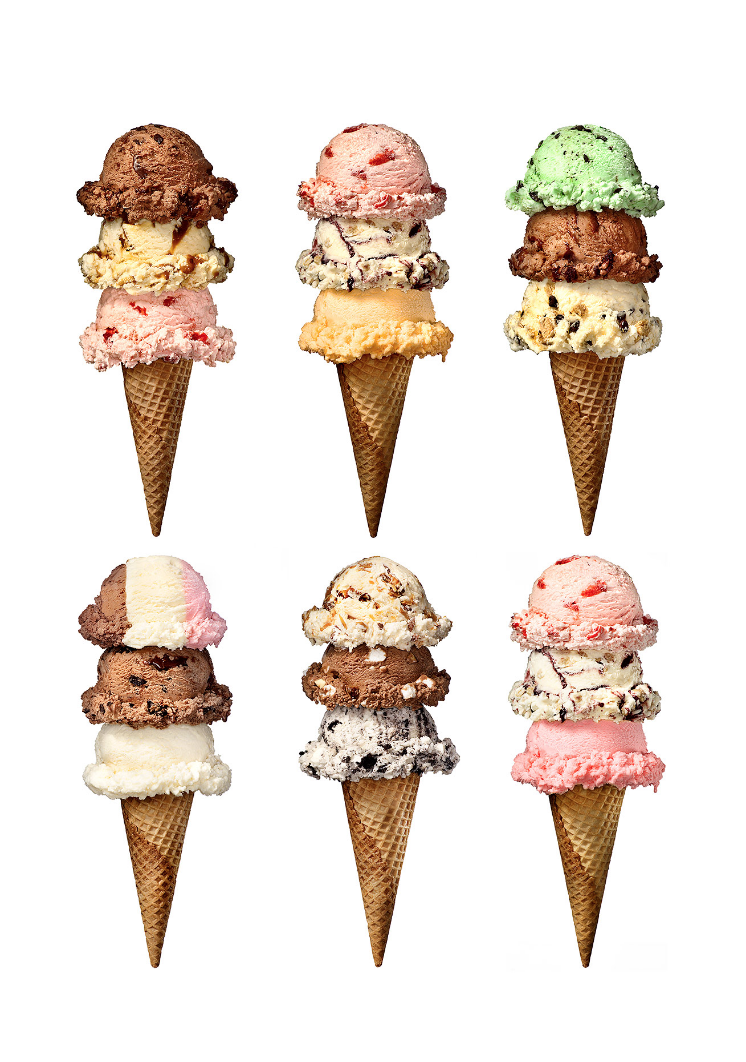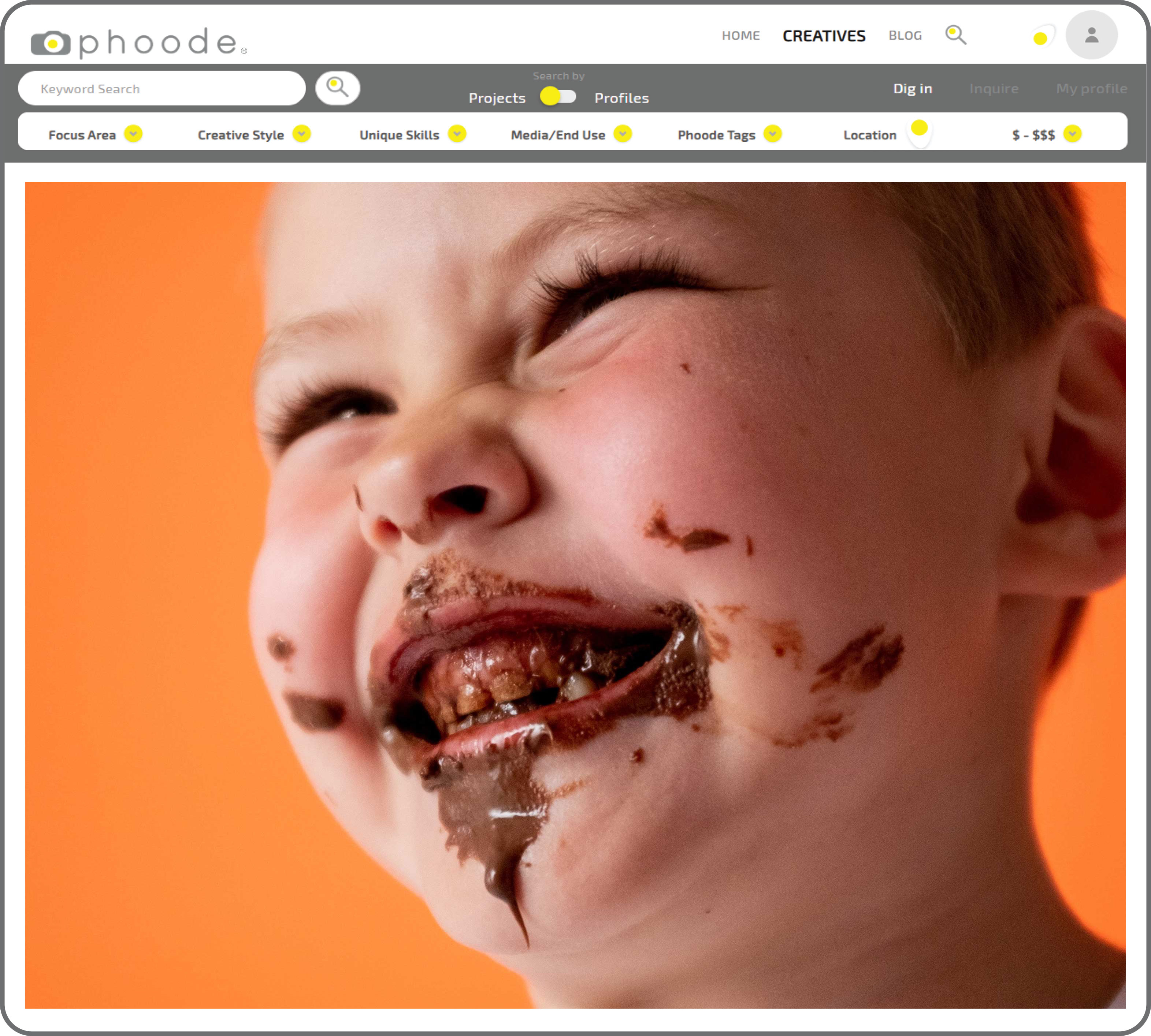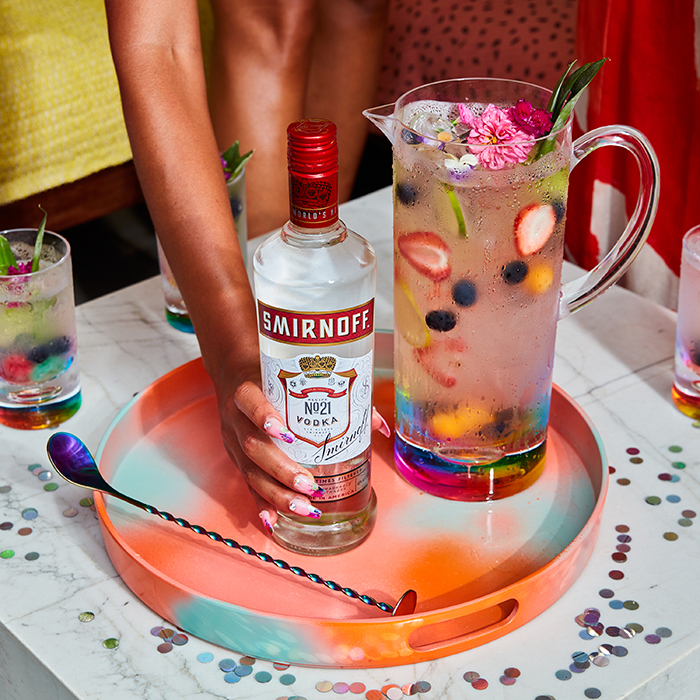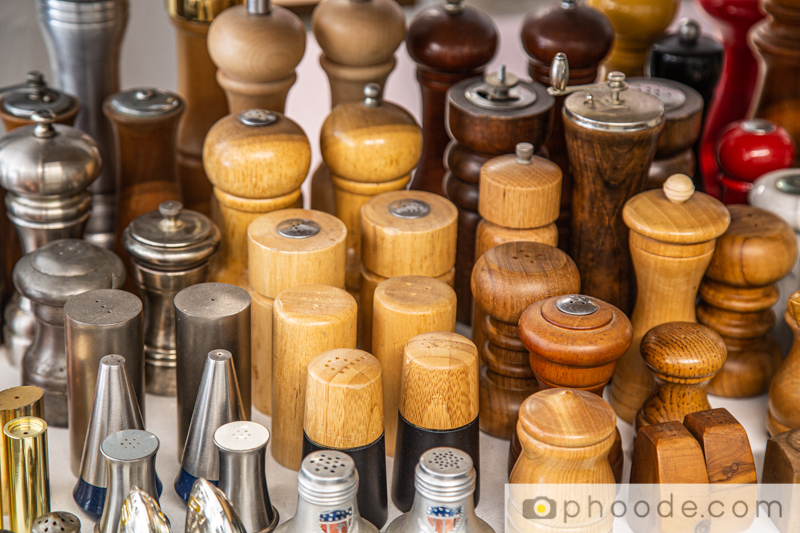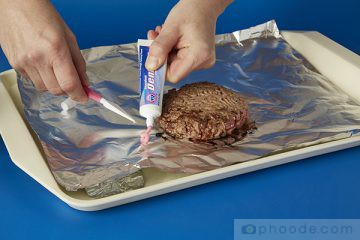How to Succeed in the Advertising Food Photography World. Phoode Talks With Commercial Food Photographer Sue Tallon
Sue Tallon is one of the top advertising food photographers in the United States, and her portfolio includes photography for some of the world’s most recognized food brands and products. She lives and works in San Francisco.
We recently spoke with Sue, who shared a very honest glimpse into her career, the advertising food photography world and some other fun food photography-related things.
Phoode: Hi Sue! Thank you so much for talking with us today. Can you tell us a little bit about your background?
Sue Tallon: Hi, I’m Sue Tallon. I’m a commercial food and product photographer. I have been working in photography for 35 years. I tend to do mostly advertising and packaging work for various brands and with various ad agencies. Most of the time I work with ad agencies and their brand clients, and I often work with design agencies that do packaging as well. Most of the clients are major food brands … I work with brands like Del Monte, Contadina Foods, Late July, Kraft Foods… just a cross-section.
P.: Great. We’ll get a little bit deeper into all of that a bit later, but first, I wanted to start with the food photography “Lightning Round,” which consists of 10 short sentences I want you to finish. Ready?
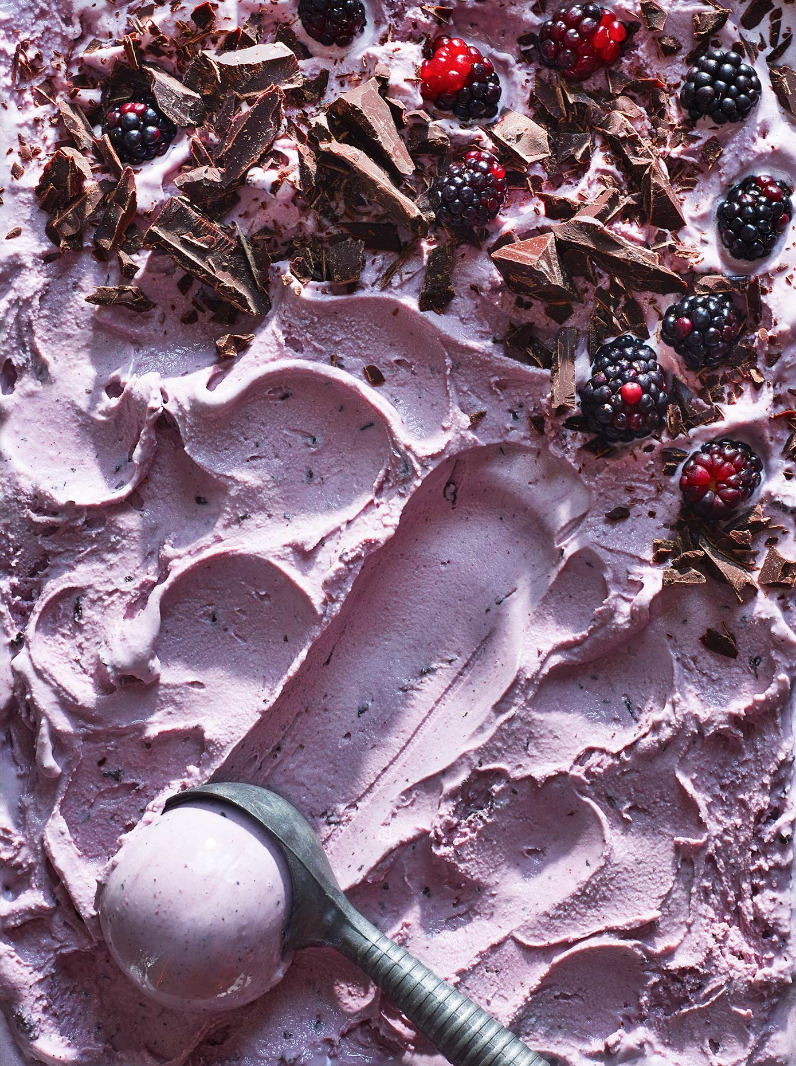
Food Photography Lighting (Round)
P.: 1. A good food photograph has to be…
S.T.: Identifiable. Like, what is the food in it? And… beautiful to look at.
P.: My favorite food subject to photograph is…
S.T.: Oh boy! I’m afraid I’m not a person that has favorites.
P.: Food magazine photography should…
S.T.: Like anything, it should illustrate the article and satisfy the client.
P.: A crucial component of becoming a successful food photographer is…
S.T.: Being good at your work and marketing really well.
P.: My favorite part of food photography is…
S.T.: Working with clients and crew members.
P.: My least favorite part of food photography is…
S.T.: Probably just the administration of the work.
P.: A professional food photographer can…
S.T.: Hopefully do a professional job.
P.: The hardest food to photograph is…
S.T.: There are things that are more challenging, but they’re not necessarily about the food. It could be about the way you have to shoot it. Ice cream can be very difficult and time-consuming when shot for advertising. Splashes are technically challenging.
P.: The level of experience in food photography presents itself in photograph via…
S.T.: I think it’s probably style. Everyone has a style. Hopefully, they work on that and try to individually rate themselves stylistically from what other people do.
P.: When I see food advertising photography walking down the street, I…
S.T.: Well, I critique it (laughs). You look at it and say, “Oh, you know, that was really well done.” Or, “I like how they did that,” or, “Wow, that’s really awful.” (laughs)
P.: Great! Now that we are warmed up, let’s explore your commercial work a bit.
S.T.: Ok!
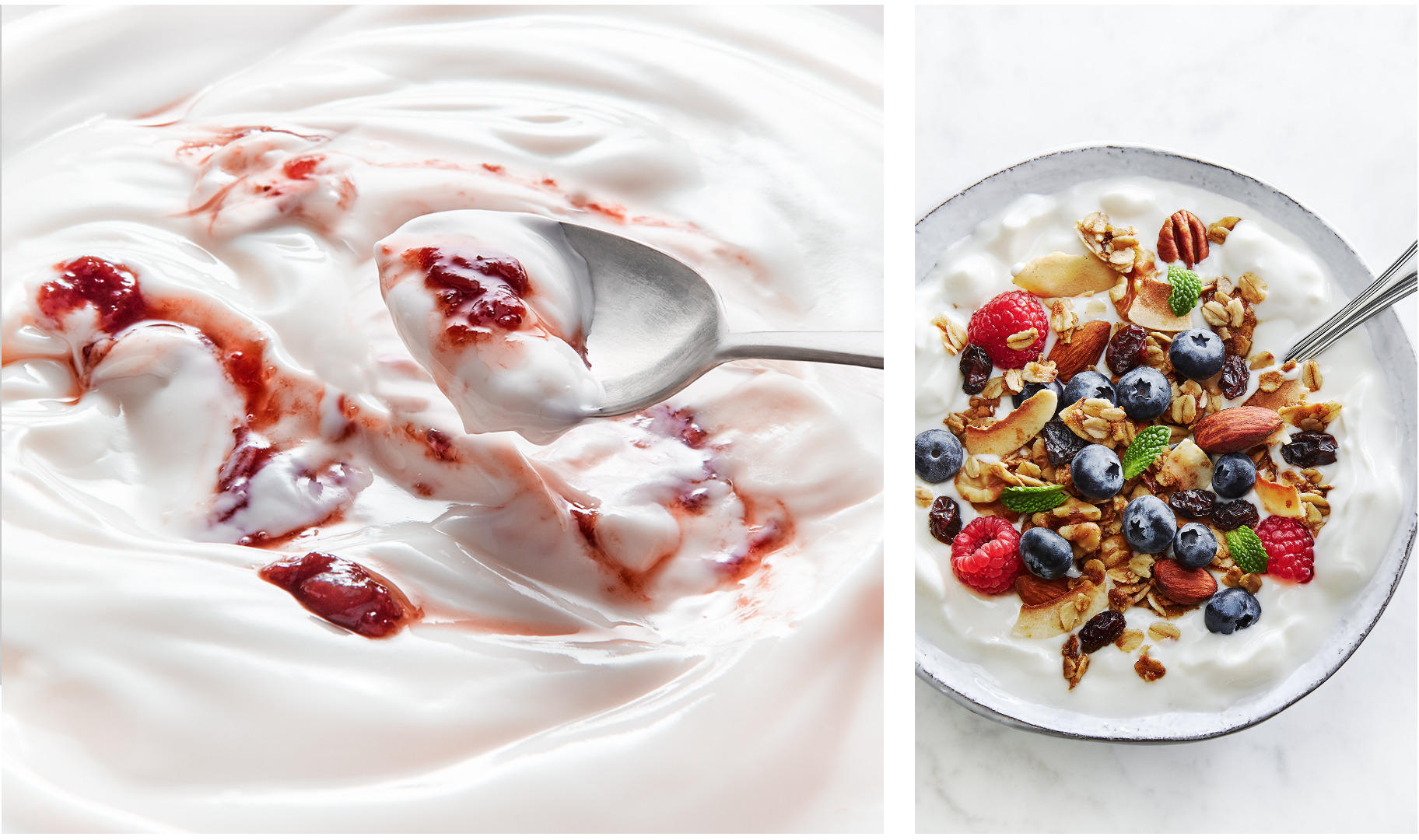
On Commercial Food Photography Work
P.: What specialty training have you completed for photography in general?
S.T.: I went to a professional photo school called Brooks Institute. It was an international school of photography that’s no longer around. I had three years of training to become a photographer. Then, I went to Los Angeles, and I assisted a lot of different photographers, from celebrity photographers to car photographers, all kinds of stuff. And that’s when you really start learning; when you go into assisting. You start seeing how it actually really works in the real world.
P.: Was there anything special during that period that motivated you to specialize in food photography?
S.T.: I’m more of a studio photographer. I’m interested in composition and lighting, and I like objects. So initially, I just liked working with composition and things, and that just suits me. I’m an in-studio person. Some people like to shoot people, or they like to be out of the studio on location and doing things. I like to be in the studio. I like to control light. I like to control composition. I like the control process, and make photographs rather than… sort of take photographs. And then, I worked with a food photographer in LA when I was younger and got sort of a good training in photographing food.
P.: Can you tell us her name?
S.T.: Oh, no one would really know at this point. And I don’t want to use the name without her permission, so I’d rather not. But when I finally started shooting for myself, some of what I was shooting was food, and I started getting most of my work for food jobs. So, I just sort of came into that as being, you know, what I specialized in.
P.: How long have you been shooting food professionally?
S.T.: About 15 years.
P.: You were around before the flood of food photographers, so you must remember the times when photography was a rare skill.
S.T.: Oh, yes. I spent half my career shooting with a four-by-five view camera and Polaroids.
P.: …And nowadays a lot of people with an iPhone call themselves food photographers… Well, times change and commercial food photography evolves too. I know you have already answered this a little bit in your intro, but let’s explore that further… You primarily work with advertising or you also do editorial food photography?
S.T.: Yes, I mostly do advertising and food packaging photography.
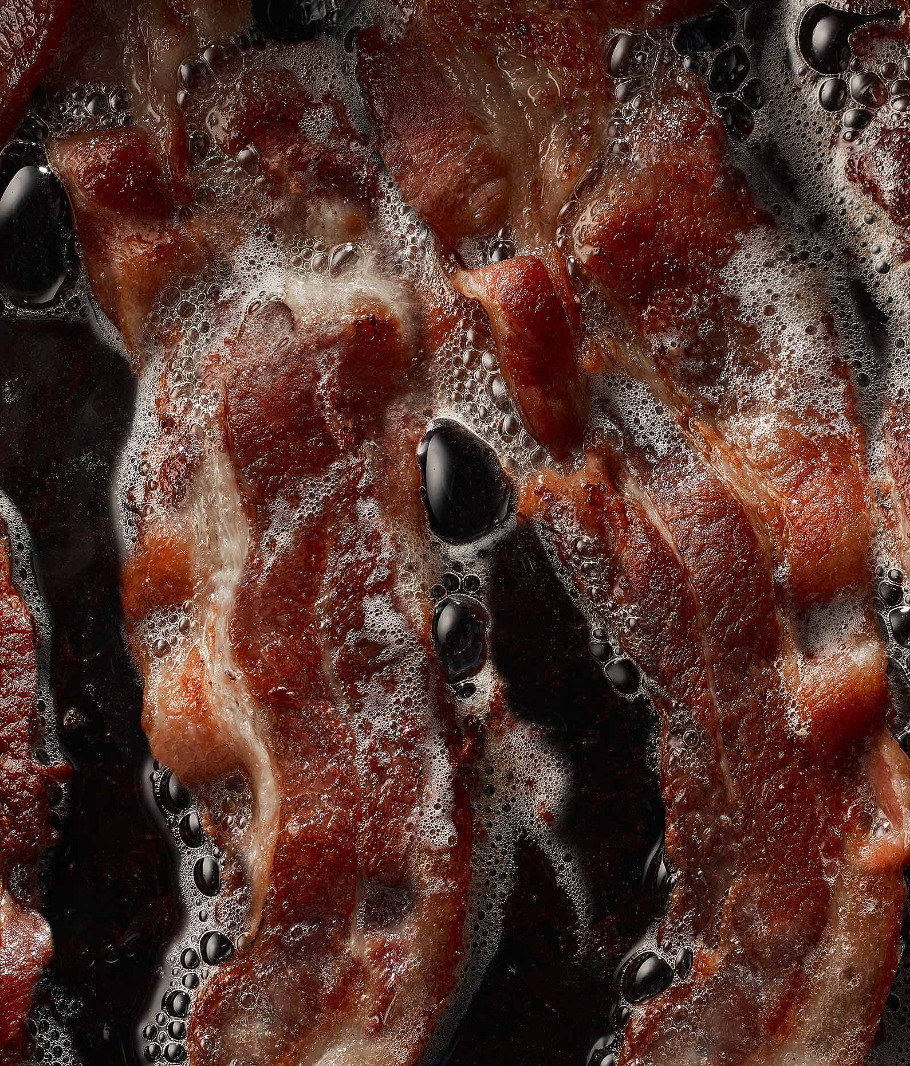
P.: Going back to what we talked about in the intro, you like advertising and food packaging photography because these jobs are more technical, composition and lighting-wise?
S.T.: Yes. A lot of the jobs I get are technically advanced. Some of that can be very technically challenging. I like that work because not a lot of people can do it (laughing).
P.: Is there any style or technique that inspires you most? And if so, what is that and why?
S.T.: I’d say that any photographer of any specialization that tries to be themselves and tries to create imagery and a style. Those are people that I’m drawn to. You can usually spot people early on who are going to be trendsetters. I spotted Grant Cornett about six years ago and now his style of food shooting has become more popular. It’s become quite a style that people are duplicating. I don’t think half the people know that (style) originated with him. Andrew B. Myers was a photographer who started years ago doing that very sort of repetitive pattern, graphic-hard-shadow thing. And he is also copied a lot now, and that started with Myers years ago. So, I’m always drawn to the people that, you know, you look at their work and you go, “Oh wow, that’s really interesting and unique. They’re going to start a trend.” And soon enough, they do.
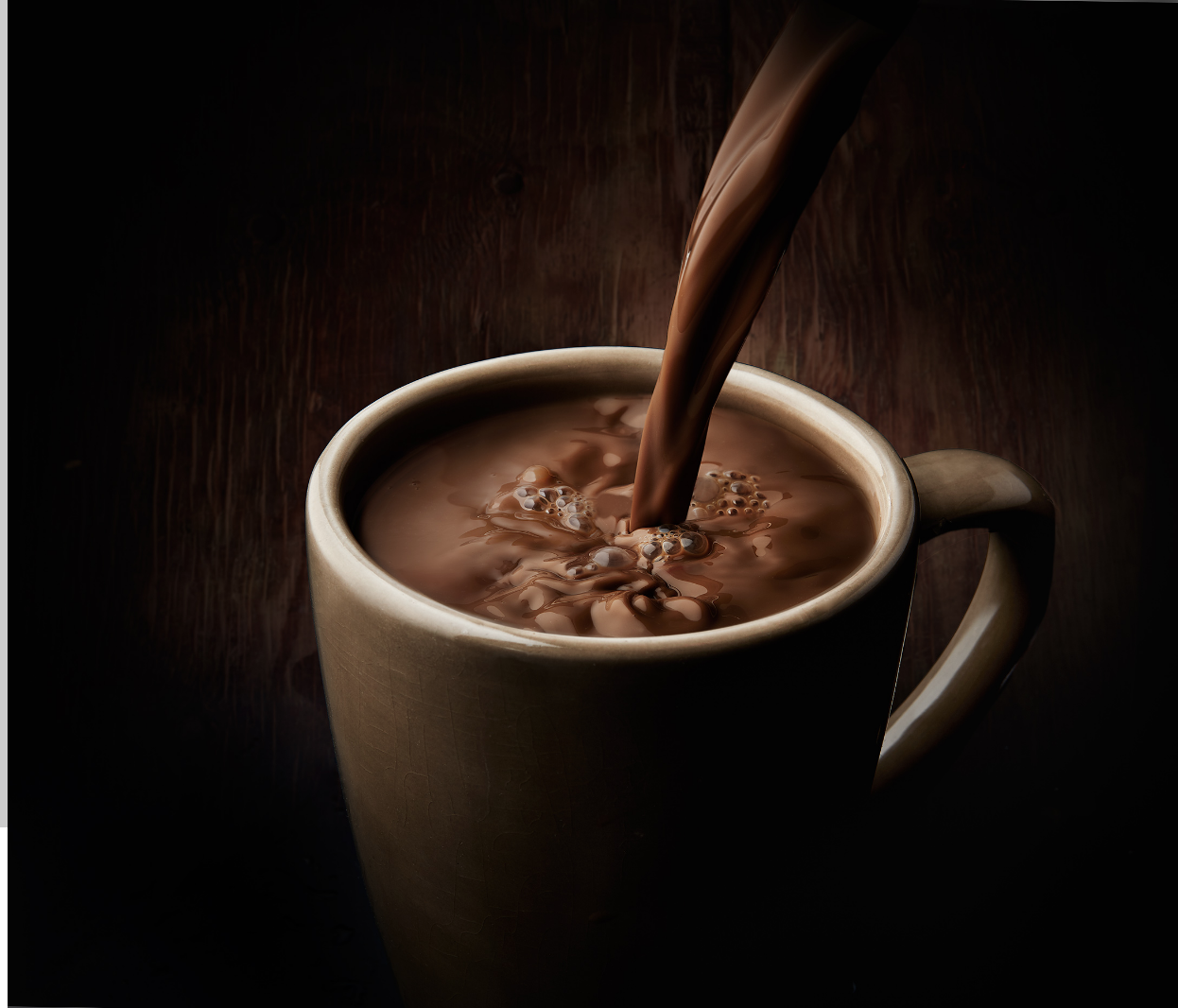
P.: Your work shows a lot of natural shapes and textures of food transforming into very subtly lit closeups. What is your general strategy for that perfect shadow-highlight balance and in food photography in general?
S.T.: I don’t think I have a strategy. I just think I’ve been lighting for many, many years and I like texture and form, and I like the simplicity of beautiful things. I’d rather focus on the simplicity of something beautiful than make photographs that are full of objects and props and things like that. What I am really interested in is to tell how tasty or how beautiful the radishes or the salad or that piece of meat is. I like to do it without having to play with a bunch of backgrounds and forks and candles and whatever. I’m not interested in that stuff.
P.: I think the ability to remain minimal is really important, which leads me to my next question: What aspects of food first attract your photographer’s eye?
S.T.: The natural beauty of food itself and on its own.
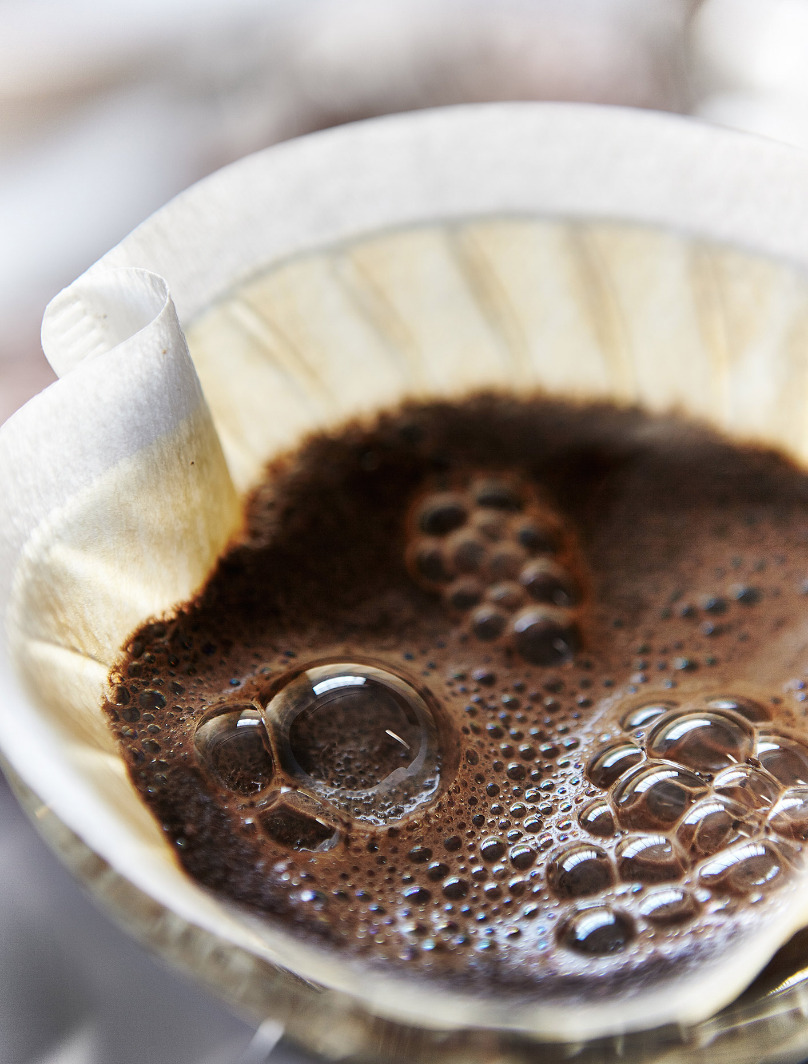
P.: How much importance do you attach to intuition versus technical skills in becoming a professional photographer? You know, some photographers are very technical, but they just aren’t that creative…
S.T.: I don’t even know that I would call it intuition. I would say that, for me, if you don’t have technical expertise, you’re going to be very limited in what you can do for your clients. You need to have a good eye: You need to be able to make a photograph that’s beautiful and well-composed, or stylistically intentionally not beautiful, but beautiful in its own way. You know what I mean? You have to know that to be an artist. You have to know when your photograph is beautiful and when it’s not, or when it’s working and when it’s not. That’s part of the work.
P.: Do you feel that the attention to the smallest detail in a food image is important?
S.T.: Absolutely. In the work that I do, yes. Everything is literally picked over very carefully when you’re shooting for clients. You’re looking at your image blown up on the screen and you’re playing with everything very carefully. Every single detail is very carefully worked on.
P.: Do you have any thought processes for photographing food? Like when you show up on set and you start working, what’s going through your head?
S.T.: It depends on what you’re shooting, first of all. But the thought process is always about composition. How does it look? How does it feel? Is the light working? Are you getting the kind of quality that you want, and the reflections with the highlights… all of that. Is it telling the story that your client wants it to tell? If you’re shooting meat, you want to make sure the meat looks absolutely gorgeous in every possible way. How it was prepared, how it was lit, the juice that’s coming out of it. So with all of the things that are going on set, you have to remember that you’re selling something for your client, and that thing you’re selling happens to be the most important thing in the image, so it is represented in the best possible way it can be.
P.: How do you know when the shot is right for the client? Do you have a moment like, “This is going to be the one,” or…?
S.T.: In food photography, you’re typically only working on one shot at a time. It’s not like model stuff where models are moving or (changing) their expression as you’re working. If you work on a plated dish of food, the clients and their director are standing right there with you as you’re shooting, and you’re all talking about what needs to change. How to get pretty close to (what they want), how to (make) something better.
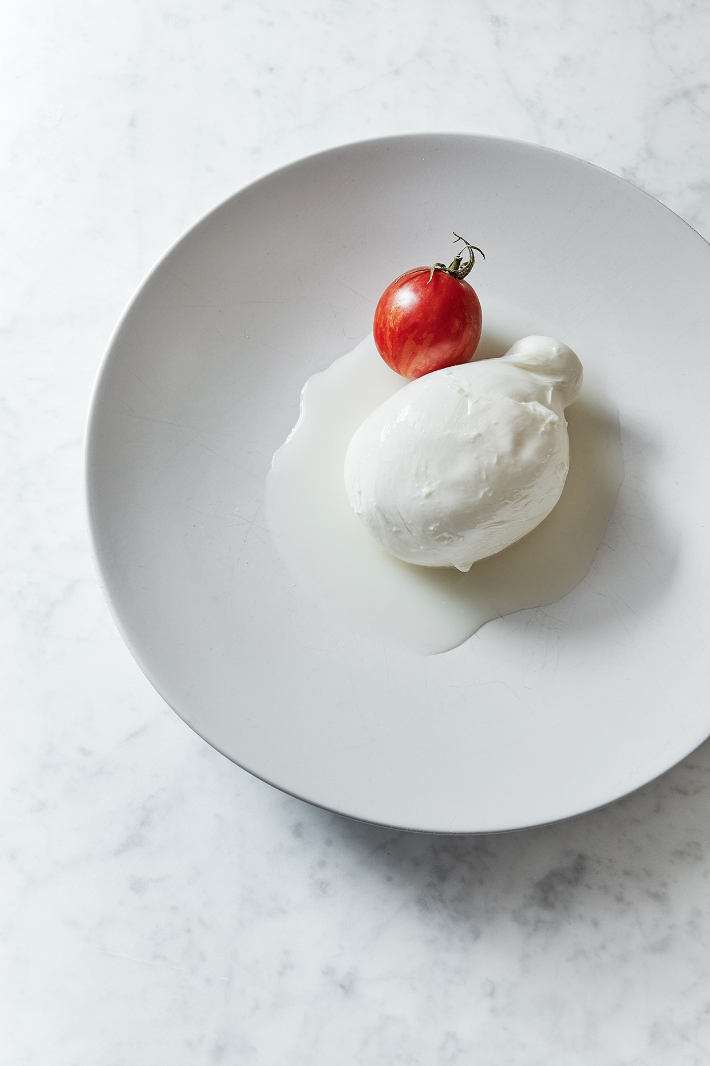
P.: Do you ever shoot commercial projects in natural light?
S.T.: I do, but not often, as the light is changing and you have to be very quick, so it just isn’t practical.
P.: How would you measure the role of retouching in creating food photography for advertisement? What percentage of successful advertising image comes from post-production work?
S.T.: That’s a hard thing to answer. I wouldn’t be able to give you a percentage number, but I would say that there is post-production work in everything I do, and it is a very large part of many things that I do.
P.: I think a lot of people from outside the industry say, “Oh, this is just Photoshop; this is that.” But many don’t understand that if you don’t take the image right, even post-production work won’t solve the problem.
S.T.: Yes. You can’t take it back after and make it into a good picture. You have to start with a good picture.
P.: Do you prefer any specific style of lighting for food photography over another?
S.T.: I don’t. In commercial work perspective, it all depends on what the client’s needs are. I don’t have a style that I like the most, but there are certain ways in general that you need to light food to make it look appetizing. So, it just depends on what the job is.
P.: What advice do you have for beginning food photographers?
S.T.: Well, I would say that it’s a very, very changing industry, and I started in this business when it was a very different business. There are a lot more people doing it (now), and if you want to have a career doing this where you actually make a living (laughs), and you can support yourself and your family and save money and have a home, then you need to take it very seriously. You need to be very good, and you need to be technically very well-trained and also be very talented. You have to bring something to the table that those…
P.: …self-proclaimed digital food photographers don’t offer?
S.T.: Yes. Because if you did the same simple stuff that everybody’s doing for $50 a shot or less… you’re never going to be able to make a living. It will be a hobby. And if you want this to be a true career, if you want to do this seriously, then it’s very hard work.
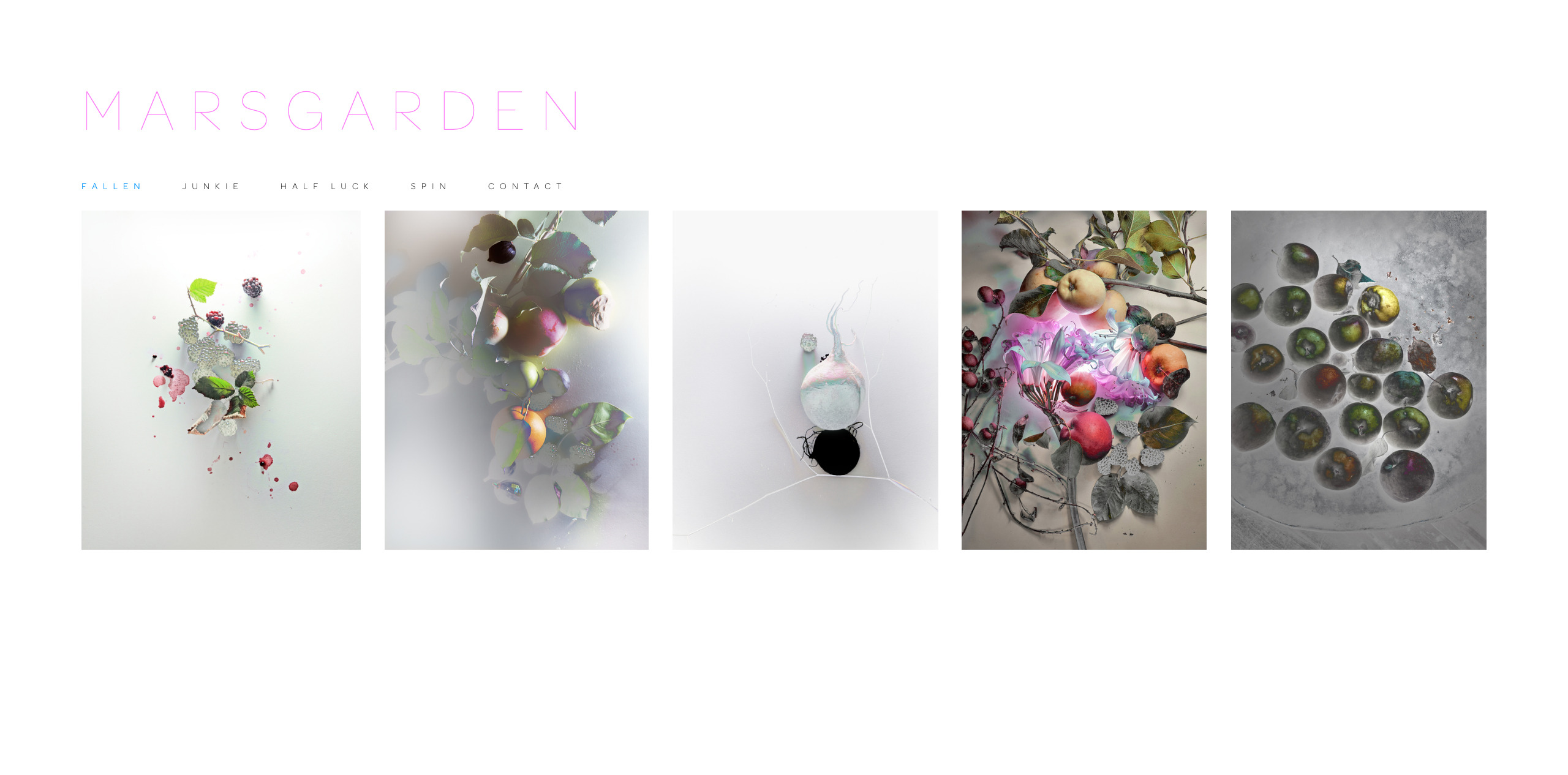
On Fine Arts Food Photography
P.: Let’s talk about your personal projects and fine art food photography. Marsgarden.com is your personal outlet for creativity. Why did you decide to do fine art photography projects?
S.T.: It’s very important to me. Every year throughout the year, I try to set time aside to just only do the kinds of pictures I want to do. And they have nothing to do with the commercial work that I do because I want to explore other things. Unfortunately, there isn’t a ton of time if you’re in career photography to do a lot of play and to do a lot of personal stuff. That’s something that I will do more of when I retire. But yes, (personal projects are) important, because if most of the commercial work you do is very specific like you’re doing advertising and packaging, you’re giving something very particular. You’re not just sort of being creative, you’re pretty much… producing an image that has already been fully thought through. You’re executing an image that has already been preplanned.
In the commercial food photography world, that is mostly the case, except if you’re doing cookbooks… or you’ve got a team of people and you’re kind of throwing things together on the set while you’re working. But if you do advertising, something like that is all preplanned before you even start shooting. For me, personal work is super important, because I started all of this as an artist and I’m still an artist, so I need to be able to have the experience creating and experimenting and enjoying that type of work.
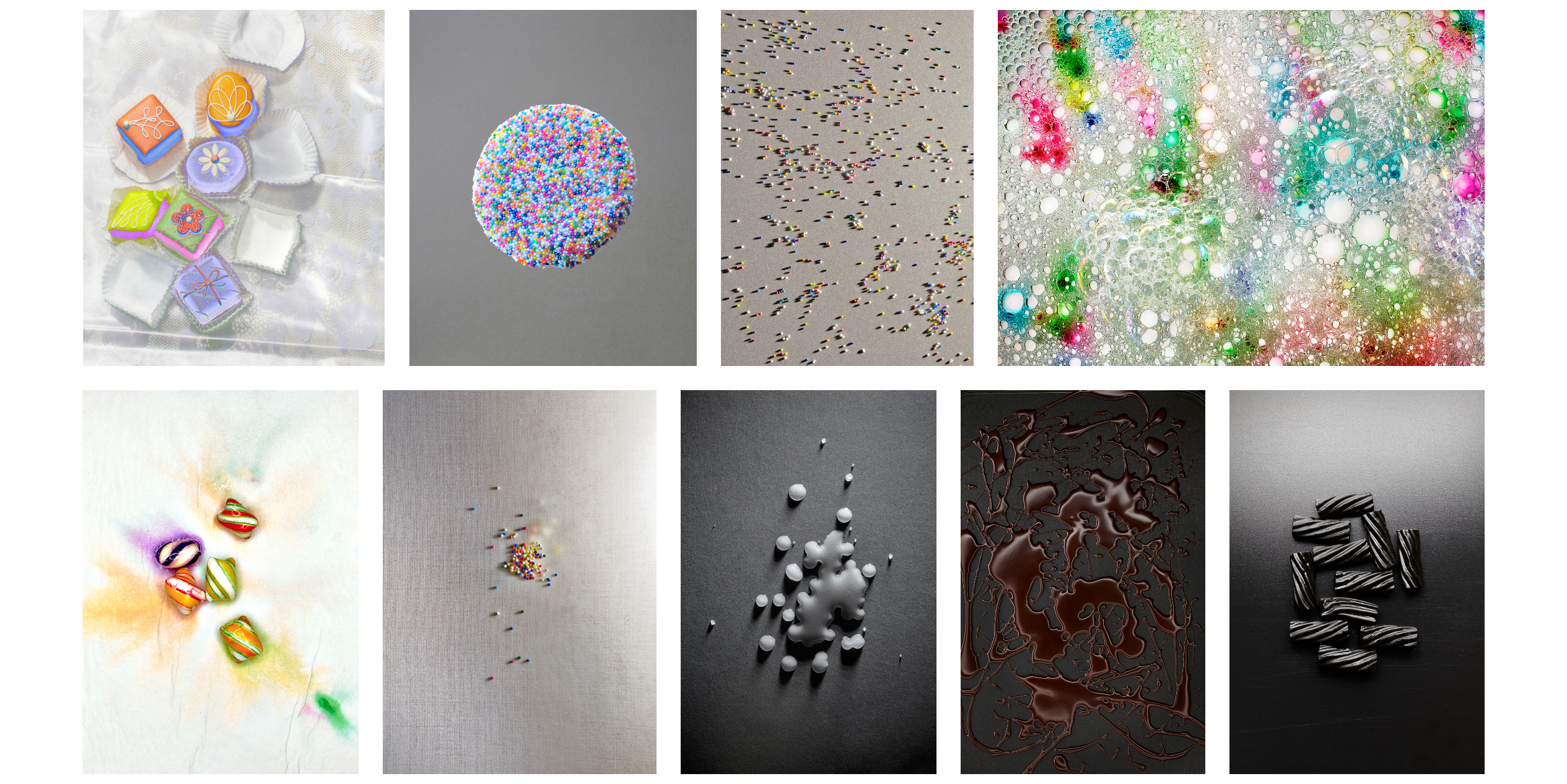
P.: Do you feel like your fine art photography sometimes comes through in the commercial food photography projects you work on? I am thinking about more flexible jobs, the ones that don’t have such a strict creative direction.
S.T.: Yes, definitely. Yes. It wasn’t that long ago I had one like that.
P.: What kind of projects would allow you to bring a little bit of more personal taste?
S.T.: The only area that has more flexibility is editorial. So it would be books and magazines.
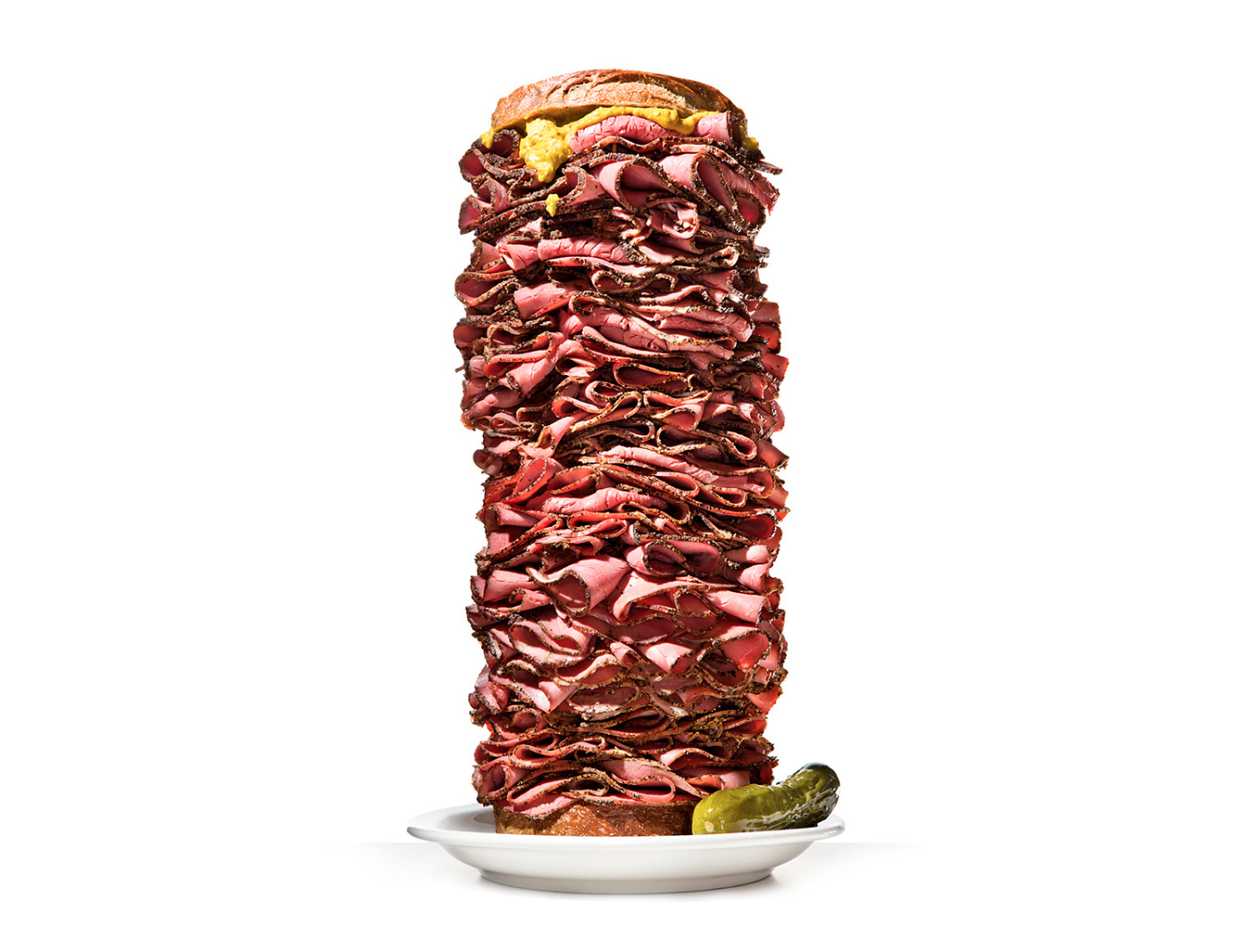
On Food Styling and Team Work
P.: Have a tried and tested food stylist with whom you prefer to work? And if so, why?
S.T.: Whether you’re in Los Angeles or San Francisco or New York, every area will have their sort of cluster of food photographers, so those are the people that you have to choose from to work with. And, yes, there will be people that you prefer to work with for various reasons. Capability is one. Some food stylists, especially I think some of the younger ones and the ones that are starting out aren’t as good at styling food for advertising and packaging. Meaning they are, but they sort of came in just sort of throwing a messy salad together and doing things that are sort of sloppy – and that’s the style right now – but they’re not good at being able to pull something together that’s all polished.
And there are lots of instances where there is food on set that you’d have to work (with), but that it’s difficult. That, you have full control over, and it has to be done really well. And that requires a lot of experience and a lot of technical skills. Depending on the job you’re doing, you need to know who those right styling people are. I have people that I know who are going to be better at doing something than others are, so I will go to them first and see if they’re available for the shoot. If they’re not, then you have to move down the list of who is.
P.: What’s the difference between an experienced and a beginner food stylist?
S.T.: You have to use professionally trained, very experienced food stylists for advertising photography. It’s not just some person who can cook; the person needs to be good at it. I have to work with professionals. I can’t just hire someone that’s like, “Oh, I’m a food stylist,” and then you get them on set and you realize they don’t know the first thing about what they’re doing. That would just never happen.
I wouldn’t ever be able to work with the beginning food stylist. I just can’t do it.
P.: Do you expect your food stylist to have an understanding of the principles of photography? And if so, why?
S.T.: A little bit, yes. That kind of comes to them through experience. They need to understand the way light works so that when they’re preparing things and they’re putting things on a plate, that’s when I talk to them and say, “The light is coming from the upper left so make sure that you turn the hero part of the steak toward the lights.” They need to understand the focus. I’m also a little bit about post-production, about what I can do, and I will usually tell them, “Oh, don’t worry about that small little detail. I can fix that in post-production faster than you can fix it in real life, so don’t worry about that little thing.” So yes, a food stylist needs to understand the basics of photography because that’s the field they’re working in.
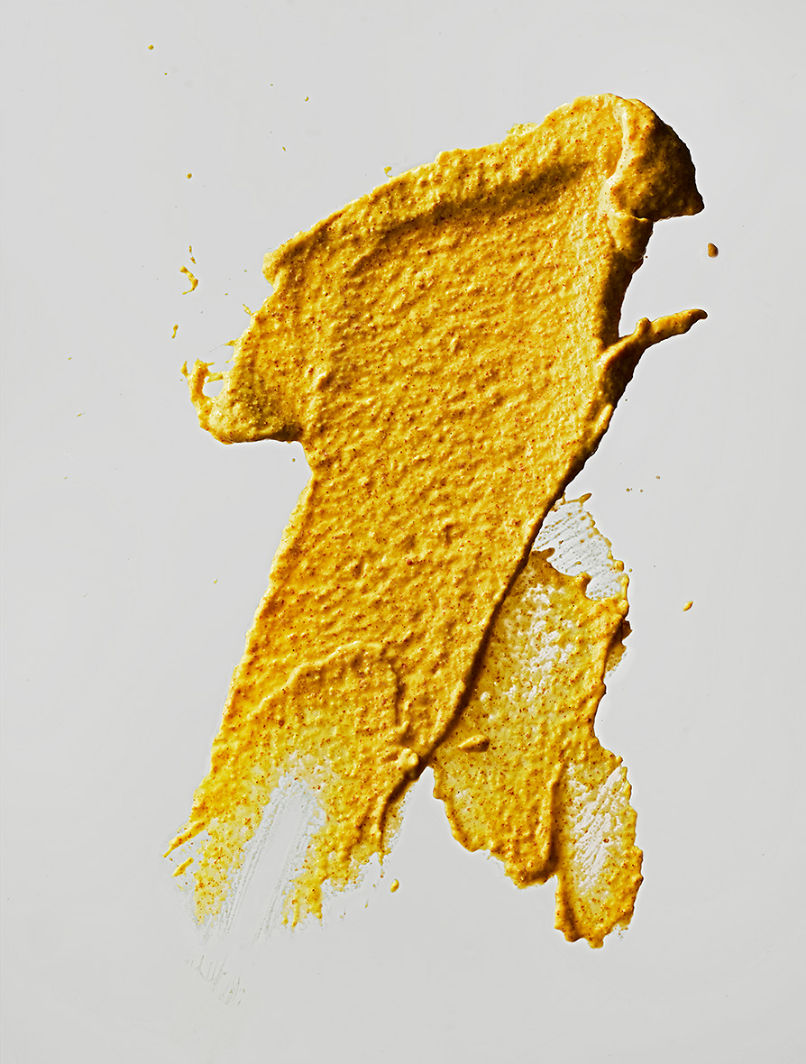
P.: What would be the most important career advice you could give to an aspiring food stylist?
S.T.: Work with a really talented food stylist that has a lot of experience and learn how to do it properly. And work with good photographers, because the photographers will also tell you what’s acceptable and what’s not. You have to just really know what you’re doing.
P.: And that comes with experience…
S.T.: Well, yes, but remember that you just can’t gather your experience on a shoot. Because when you’re on a shoot, you have to already be a professional. It’s not like advertising shoots are for training people; they’re for working with professionals, and it’s an important and costly job for the client.
P.: So advertising food photography jobs are a team effort; a collaboration of professionals. From your perspective, what combination of creative professional and personal skills produces the best team?
S.T.: From my perspective, first of all, (the best trait is) that they’re really good at what they do and their experience seconds that. They’re team players and they’re enjoyable to be with, and that they’re willing to go the extra mile. They’re just enthusiastic, but they’re willing to do whatever it takes to help out on that shoot. When you’re on the shoot and you’re all together, there may be times when you’re called on to solve a problem that may not be your problem, but as a team member, you take it on. … It’s being willing to be a part of the team and just being good-natured and very professional, talented and capable. All those things.
P.: How important is creative collaboration? Because I believe it’s super crucial to the future success of any beginning food photographer or stylist.
S.T.: If you’re starting out and you want to get together with other people, then that’s great. And just do test shooting where (they’re) trying to make images for their websites and their portfolios and that sort of thing, then that’s great because then you go out and you meet people and you find out what they’re good at – the prop stylists, the food stylists… all of that. And then all of you can get together and say, “Ok, let’s make these pictures together.” And then you can collaborate and do anything you want when you’re working for your website and your portfolio. So, when you’re first starting out, you should do a lot of that.
P.: How much creative collaboration can you expect on commercial-level food photography?
S.T.: Again, it depends on the commercial job. I mean, there are plenty of jobs when there really isn’t a lot of freedom to be creative. Especially in a lot of advertising work, the creativity has been so preplanned by the ad agency, the creative director and the art director because the client needs to have all their questions answered before you ever even get to the photoshoot. They want to know exactly what they’re going to get before they even get to the photoshoot. So that’s why I said earlier that really in advertising, especially in food and product stuff, a lot of it is simply being able to execute really well what has already been preplanned. And there can be days and aspects with the prop styling or environmental styling or whatever that can come into play. But generally, if you want to enjoy creative collaboration, that stuff is going to be happening more in cookbooks and editorial shoots. And even a lot of editorial shoots nowadays are so preplanned. They tell you exactly what they want, and you pretty much just have to execute it. The creative collaboration part is missing.
P.: How competitive is the food photography market in San Francisco now?
S.T.: Extremely, extremely… everywhere, it doesn’t matter where you are, it’s extremely competitive, isn’t it?
P.: What has been the biggest trend change since you began your career?
S.T.: Since I started working, changing from film to digital. It changed everything. It changed the entire business; changed all the technical aspects of it. It changed how you work. It changed how many photographers are out there. It changed the nature of the industry, the competition just multifold, got much harder. It used to be a very technically difficult job, and there were only a few people that were willing to do it, so there were far fewer photographers than there are now. Now it’s technically much easier, but you still need to be good at it because you need a variety of different skills. And rates are going way down. How much people are making is going down… for photographers, not for the rest of the crew. The rest of the crew (pay) continues to go up; the photographer’s rates go down.
P.: Any trends that you particularly dislike or like?
S.T.: I think standards are changing for the worse. I see a lot of work in magazines and billboards and stuff that is truly terrible. It’s awful. I know that it’s because standards are changing, and people don’t want to pay for quality work anymore. So, I think as younger people come up, I think that it’s too bad, but it’s the way it is. The cost of something has become more important than, you know, the quality of something.
P.: What are your thoughts on the social media photography market, regarding quality, style, etc.?
S.T.: I think it’s fine. It’s a whole different look. It’s just one part of how people advertise now. I mean, the major food brands continue to do their regular advertising and their packaging as needed, but now they have the additional social media advertising that they’ll do. And there’s a look for that, and the look is, “Make it looks like somebody who’s not a photographer took the picture.” Yes, that’s… that’s a look. “Amateur” is a look now.
P.: So, if somebody wants to get into a food photography career as far as you did and become a high-end advertising photographer, and they want to go beyond social media photography, what steps you would recommend to that person to get there?
S.T.: They need to be really good… technically and aesthetically, and they need to be very professional and know how to run a business and how to provide work under enormous pressure. And be consistently good, and not make mistakes, and be able to provide their clients – who are spending a lot of money on these photoshoots – with quality work every single time.
P.: I think sometimes that people don’t realize that the commercial photoshoot is a very complex effort; that’s it’s not just one person with a camera and a lighting stand. There’s a creative director, an art director… often, there are different types of stylists and assistants, digitech help and all kinds of things. Could you explain the process a little bit?
S.T.: Once you get hired to do a job, then you need to hire the crew to do it with you. You’ll be operating the camera and you’ll be the boss, but you’ll need the appropriate number of food stylists and assistants to produce the work with. You need to hire the digitech. I have my own computer and camera equipment, but I hire a digitech to operate the computer system while I am shooting because files need to be organized, backed up, etc. It’s a whole other job. There’s no time for the photographer to do that and be in charge of any technical issues that come up while you’re shooting because they come up all the time. And you need stylists, prop stylists, props purchased, food purchased. You may need a producer from time to time that helps organize the entire job. If you have a lot of moving parts, a lot of crew members and a lot of production, they’ll handle that part of it. There can be days and days and days of planning and meetings and conversation and changes to production.
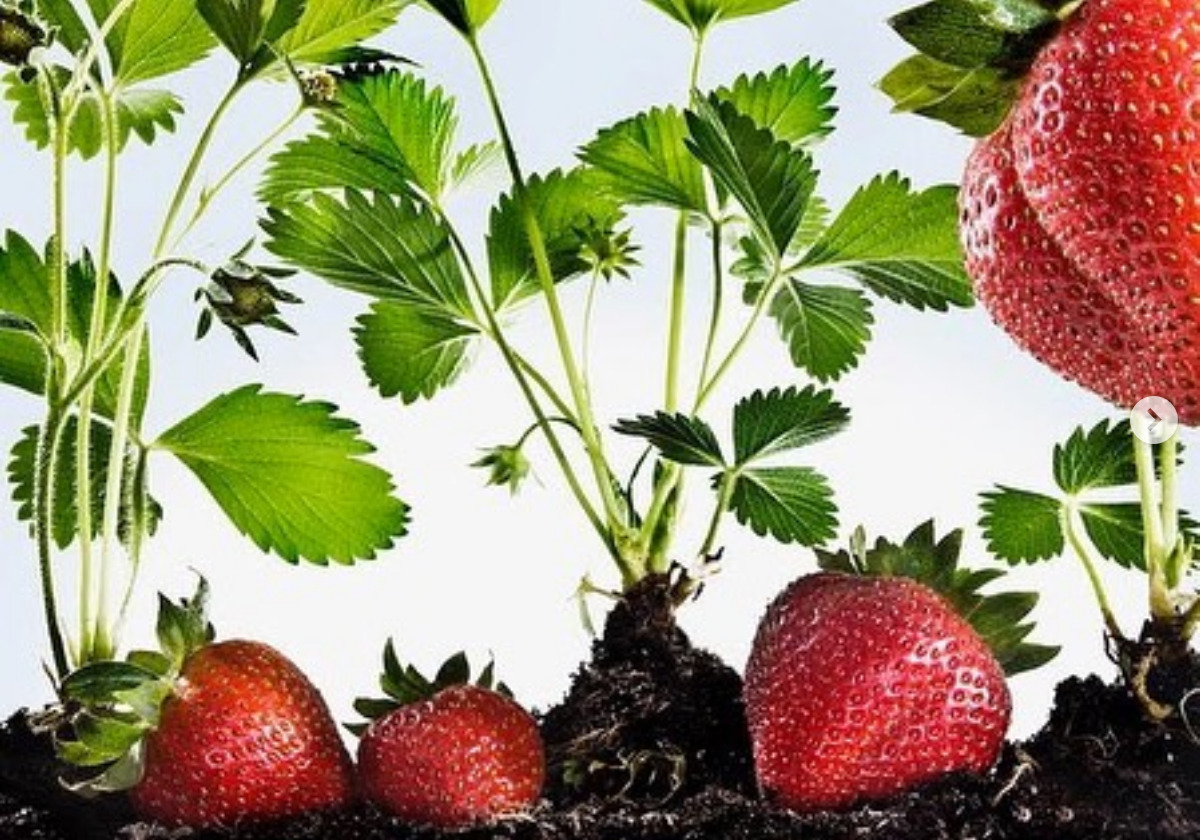
On Food Photography Gear
P.: Let’s talk about the subject of gear and lighting for food photography. It seems like many food photographers start as food bloggers who shoot with natural light, and have a hard time when they transition careers, and from using natural light to studio light and doing that properly as you said. Do you have any tips for people like that?
S.T.: Go to school and learn how to do it. Lighting is a whole thing. It’s very complicated. It’s a complex thing that you have to know. You have to know how to use the equipment. You have to understand lighting. You have to learn how to light. It takes time. It’s something to learn.
P.: What is the importance of understanding the general physics of light?
S.T.: Photography is about light and lighting. It’s the most important thing after being able to compose something that looks good. If you don’t know how to light or don’t understand lighting, you’re not a professional photographer.
P.: A lot of food photography beginners or hobbyists are under the impression that there is a perfect camera, lens or lighting system for creating that perfect food image. And I hear a lot of questions like, “What is the perfect lens or camera for food photography?” So instead of exploring the subject of photography, they get fixated on the gear. If someone were to approach you and ask you that question, what would you say?
S.T.: I guess all these questions are kind of leading to the same thing, which is, I would say, go to school and learn how to be a photographer first. A photographer is a profession. I think people think because they can pick up a camera that there’s nothing to learn, but it’s like being a writer. Yes, you can write, but there are all kinds of rules and techniques, and there’s a lot to learn about writing to be a good writer. If you want to be a professional photographer, go to school and learn how to be a professional photographer. That’s honestly the end story. It’s not like, you know, “Oh, I’m going to fumble my way into this.” It’s a skill.
P.: When and what kinds of equipment do you use and why? Not necessarily detailed, but, say, when it’s appropriate to use large format, when you use medium format or DSLR or lens, and so forth.
S.T.: I use the large format stuff when I know that my client needs a large file size because they’re going to be doing billboard work, so they don’t know what they’re going to use the images for down the line. You have to make sure you give them a big enough file that they can have a lot of data there. So, it’s about how big they’re going to blow it up as well as the quality of the gear. Lenses… it’s just dependent on what you’re doing. If you don’t understand what lenses do, then go to school and learn what lenses are for. Do you know what I mean? It’s learning how to use your equipment. If you’re a photographer, it’s essential. It’s like being a carpenter: You’ve got to know how to use a saw and a different chisel and a drill and all those things, and when to use them.
P.: Do you have any special plans for the future other than doing more fine art photography when you retire?
S.T.: I think, moving forward, when I scale way back on just needing to do the advertising and stuff, I’ll be… just taking pictures for myself, enjoying doing that. I may teach. I’ve done a little bit of teaching, and I enjoyed (it). Other than that, I’m just going to retire (laughs).
P.: I guess you are going to simply enjoy your life.
S.T.: Yeah (laughs). By the time I retire, I will have done that for 40-plus years, and I think I’ve done enough.
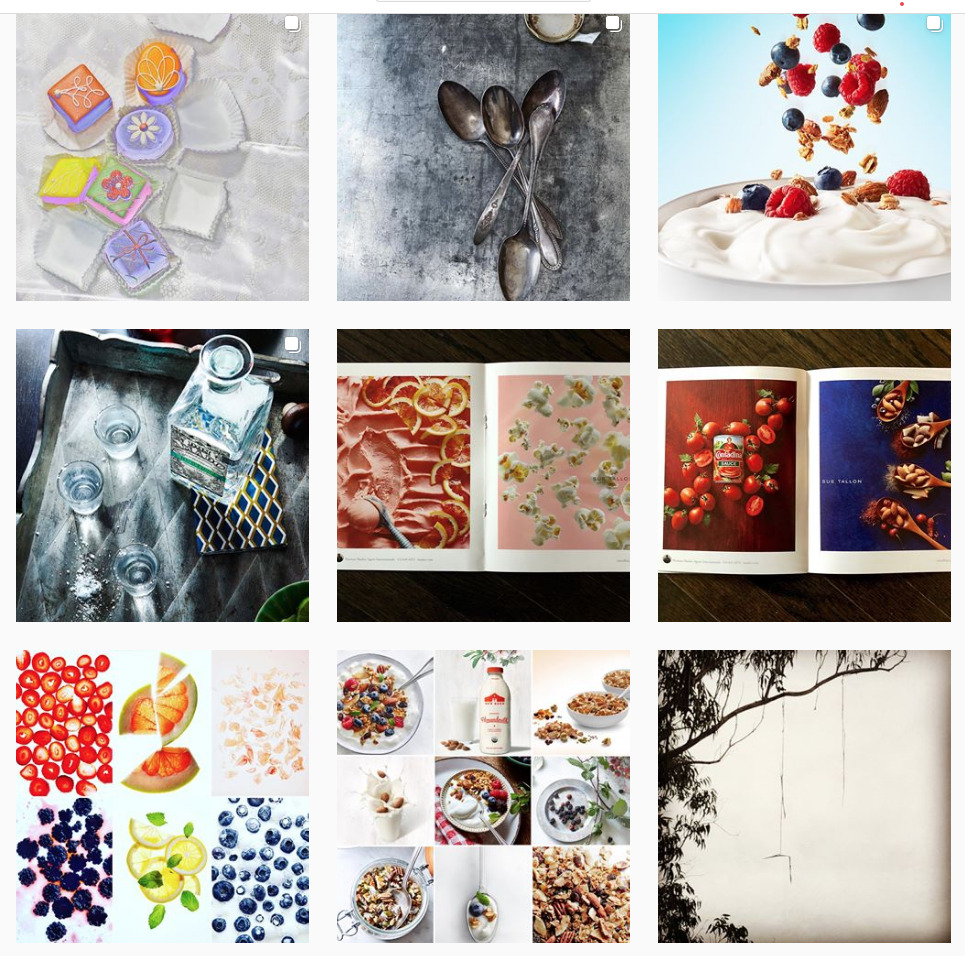
P.: Is there anything else you want to share with the readers?
S.T.: I think just having done this interview with you, I would say to people who want to succeed in advertising food photography: If you really want to be a successful photographer, go to school and learn how to be a professional photographer. You’re not going to do it by reading blogs; you need to go to school. It’s a skill. I think there are a lot of young people coming up in this business that just sort of think it’s, like, fun and they can make money, but you have to go to school. This is a real business. People make money because they work hard at it and survived years of struggle and hard work and expense and all of that. It’s not some easy, “I’m going to make money” thing. It just isn’t. There are a million people out there doing those little Instagram shots and stuff. That’s not professional photography. If you want to have a career and take care of yourself financially and all of that, then put the work in and go get a career. But doing all these little things hoping that you’re just going to make money, well, it’s just not going to happen unless you are very serious about it.
P.: Ok, I think that’s all the questions we have! Thanks for taking the time to share such great pointers and information; we really appreciate it, and I hope it will help a lot of people to figure out what they want to do. Thank you.
S.T.: Thank you.
Check out Sue’s food photography portfolio at suetallon.com
All images ©Sue Tallon.




